Problem Solving in Business
This guide is designed to help you approach your business problem solving process in a systematic way.
12/13/20234 min read
WHAT'S YOUR PROBLEM?
Problems, big and small, are common in businesses, big and small. While having them is no cause for alarm, how you try to solve them can mean either further failure for your business, or the opportunity to explore new paths to success!
This guide is designed to help you approach your business problem systematically by providing information resources from authoritative databases, reliable books, and credible websites that can help you understand your situation more clearly and provide a distinct direction towards the appropriate solution.
Source: https://libguides.nypl.org/
WHAT IS PROBLEM-SOLVING IN BUSINESS?
Problem-solving in business is defined as implementing processes that reduce or remove obstacles that are preventing you or others from accomplishing operational and strategic business goals.
SOURCE:
Center for Management & Organization Effectiveness
Problem-solving in business is characterized as executing forms that decrease or expel obstructions that are keeping you or others from achieving operational and vital business objectives.
SOURCE: Yousef Alsafadi
WHY IS PROBLEM SOLVING IMPORTANT TO YOUR BUSINESS?
Problem-solving is important both to individuals and organizations because it enables them to exert control over their environment.
* Fixing things that are broken: Some things wear out and break over time, others are flawed from day-1. Personal and business environments are full of things, activities, interactions and processes that are broken or not operating in the way they are desired to work. Problem-solving gives us a mechanism for identifying these things, figuring out why they are broken and determining a course of action to fix them.
* Addressing risk: Humans have learned to identify trends and developed an awareness of cause-and-effect relationships in their environment. These skills not only enable us to fix things when they break but also anticipate what may happen in the future (based on past-experience and current events). Problem-solving can be applied to the anticipated future events and used to enable action in the present to influence the likelihood of the event occurring and/or alter the impact if the event does occur.
* Improving performance: Individuals and organizations do not exist in isolation in the environment. There is a complex and ever-changing web of relationships that exist and as a result, the actions of one person will often have either a direct impact on others or an indirect impact by changing the environment dynamics. These interdependencies enable humans to work together to solve more complex problems but they also create a force that requires everyone to continuously improve performance to adapt to improvements by others. Problem-solving helps us understand relationships and implement the changes and improvements needed to compete and survive in a continually changing environment.
* Seizing opportunity: Problem solving isn’t just about responding to (and fixing) the environment that exists today. It is also about innovating, creating new things and changing the environment to be more desirable. Problem-solving enables us to identify and exploit opportunities in the environment and exert (some level of) control over the future.


SKILLS AND QUALIFICATIONS NEEDED IN PROBLEM SOLVING
Research skills are our ability to find an answer to a question to a solution to a problem. Research skills include the ability to gather information about your topic, review that information, and analyze and interpret the information in a manner that brings us to a solution.
Emotional intelligence or EI is the ability to understand and manage your own emotions, and those of the people around you. People with a high degree of emotional intelligence know what they're feeling, what their emotions mean, and how these emotions can affect other people.
For leaders, having emotional intelligence is essential for success. After all, who is more likely to succeed – a leader who shouts at his team when he's under stress, or a leader who stays in control, and calmly assesses the situation?
Creativity is the act of turning new and imaginative ideas into reality. Creativity is characterized by the ability to perceive the world in new ways, to find hidden patterns, to make connections between seemingly unrelated phenomena, and to generate solutions. Creativity involves two processes: thinking, then producing.
Critical thinking is the ability to think reasonably, detaching yourself from personal bias, emotional responses, and subjective opinions. It involves using the data at hand to make a reasoned choice without falling prey to the temptations of doing things simply because they’ve always been done a certain way.
Teamwork in business involves a group of individuals working together to complete a task or a large goal. A leader's role in developing and managing the team is critical to team success.
Any new venture, whether business or personal, entails unknowns. And unknowns mean there’s risk. Entrepreneurs embrace this risk, not risk in general, but a special kind of risk. Researcher Sally Caird calls it “calculated risk taking” and describes it this way:
“Calculated risk-taking is operationally defined as the ability to deal with incomplete information and act on a risky option, that requires skill, to actualize challenging but realistic goals.”


EXAMPLES OF COMMON BUSINESS PROBLEMS
1. Lack of Cash Flow
2. Marketing and Advertising
3. Managing Time
4. Performing Administrative Work
5. Hiring and Retaining Top Talent
6. Providing and Managing Benefits
7. Navigating State/Federal/Government Regulations
Source: https://www.guidantfinancial.com/blog/top-business-problems/
1. Finding Customers
2. Increasing Brand Awareness
3. Building an Email List
4. Lead Generation
5. Delighting Customers
6. Hiring Talented People
7. Managing Workflow
8. Financial Planning
9. Scaling
Source: https://blog.hubspot.com/marketing/small-business-challenges
Ready to expand your reach?
I love working with inspiring and dedicated professionals. View my website design options to learn more about my design process and how I can help your business grow.
©2025 Designed To Conquer LLC Terms & Conditions FAQ
Designed To Conquer LLC is a NYS MBE Certified Creative Tech. Studio.
STUDIO HOURS
Monday: 10am-6pm
Tuesday:10am-6pm
Wednesday:10am-6pm
Thursday:10am-6pm
Friday:10am-6pm
Stay informed about upcoming webinars, community projects, and new services.







